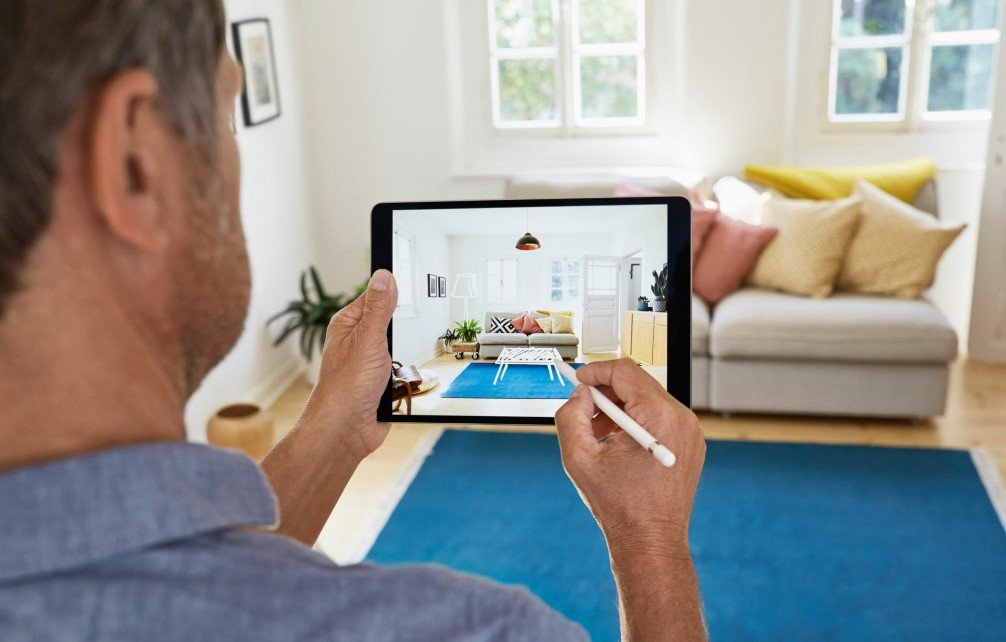Home Improvement
Virtual Reality in Interior Design: How Firms Are Revolutionizing Client Visualization

The concept of virtual reality (VR) has been advancing quickly in the modern digital age. Known for its immersive experiential quality, it involves the use of technology to create an environment that simulates physical presence in real or imagined worlds. Engaging various senses like vision, hearing, and touch, VR bridges the gap between reality and digital environments, providing a unique user experience.
The design industry has undergone significant transformations due to technological advancements. This transition is highly visible in fields like interior design, where crafting spaces has become more sophisticated and client-centric. A key factor that has revolutionized this scenario is the use of virtual reality. It has allowed designers to break away from conventional 2D visualizations and provide their clients with an immersive 3D experience of their future spaces, proving to be a game-changer in the industry.
Importance of Visualization in Interior Design
Visual representation plays a critical role in the field of interior design. It serves as a conduit between the designer’s idea and the client’s understanding of that idea. Highly detailed and precise visual renderings allow interior designers, including Los Angeles interior designers, to express their concepts effectively. Visualization is more than a mere tool of representation, it is also a language of communication that aids in conceptualizing, planning, and executing design ideas.
Several methods have been employed by interior designers to bring their designs to life, from hand-drawn sketches, 2D blueprints, and physical 3D models to digital renderings. Despite their effectiveness, these traditional methods often fall short in providing a holistic perception of the design, especially from a client’s perspective. It is difficult to convey changes in perspective, scale, or lighting conditions. As a result, there can often be a considerable gap between a client’s understanding and a designer’s intent.
Rise of VR in Interior Design
The use of VR technology in the design industry marks a significant shift from conventional methods. In the arena of interior design, it has quickly ascended from being a novel idea to a game-changing tool. The immersive nature of VR gives clients a never-before-seen view of their spaces. It allows designers to create a situational experience that facilitates a clearer understanding of the proposed design.
More and more interior design firms are now aligning with this technological leap. The main driving force behind this rapid adoption is the unquestionable value VR brings to client presentations and design modifications. By allowing clients to virtually step into their future spaces and experience every detail in real-time, VR has provided a level of customer engagement that was previously unimaginable.
Benefits of VR in Interior Design
Virtual reality offers a plethora of benefits when it comes to interior design, one being the potential to revolutionize client visualization. With VR, clients can experience their architectural space differently. They can explore different design styles, furniture layouts, color palettes, and lighting options. They can do this in an immersive 3D environment that offers 360-degree views. This kind of visual exploration aids in decision making, as clients get to see and interact with the design before it’s executed.
Several case studies from around the world show the use of VR in interior design projects to varying degrees of success. These cases highlight VR’s unique ability to offer a full-scale walkthrough of the property, down to the smallest detail. Traditional methods like 2D blueprints and 3D digital renderings simply cannot match this level of immersion. As such, the advantages of using VR over traditional methods for client presentations include impressive interactivity, realistic spatial perception, faster revisions, and increased client satisfaction.
The Future of Virtual Reality in Interior Design
As the technology continues to progress, it will likely revolutionize the entire design process. Virtual reality could become the standard means of visualizing and modifying interiors, replacing traditional 2D and 3D renderings. The interactive and immersive nature of VR can help clients better understand spatial concepts, which can potentially lead to the creation of more innovative and personalized designs.
We can expect to see further advancements in VR technology. This includes improvements in graphical fidelity, rendering speeds, and ease of use, making VR more accessible to the masses. Similarly, we might also see the development of combined technologies, wherein virtual reality is integrated with other digital technologies to create superior design tools. This could potentially open up new horizons for the interior design industry, offering even greater possibilities for innovation and creativity.
Virtual reality has become a disruptive force in the world of interior design, transforming the way designers visualize and present their ideas. As technology continues to advance and become more accessible, VR’s role in interior design is set to become increasingly vital, steering the industry to an exciting future.
-

 Social Media2 months ago
Social Media2 months agoWhat the “67” TikTok Meme Really Means
-

 Tech2 months ago
Tech2 months agoWhat To Do When Your Business Faces Network Vulnerabilities
-

 Self Improvement2 months ago
Self Improvement2 months agoUsing BCBS Rehab to Access Quality Addiction Care
-

 Games2 months ago
Games2 months agoPusoy Strategies for Play That Also Work in Pusoy Dos in English






